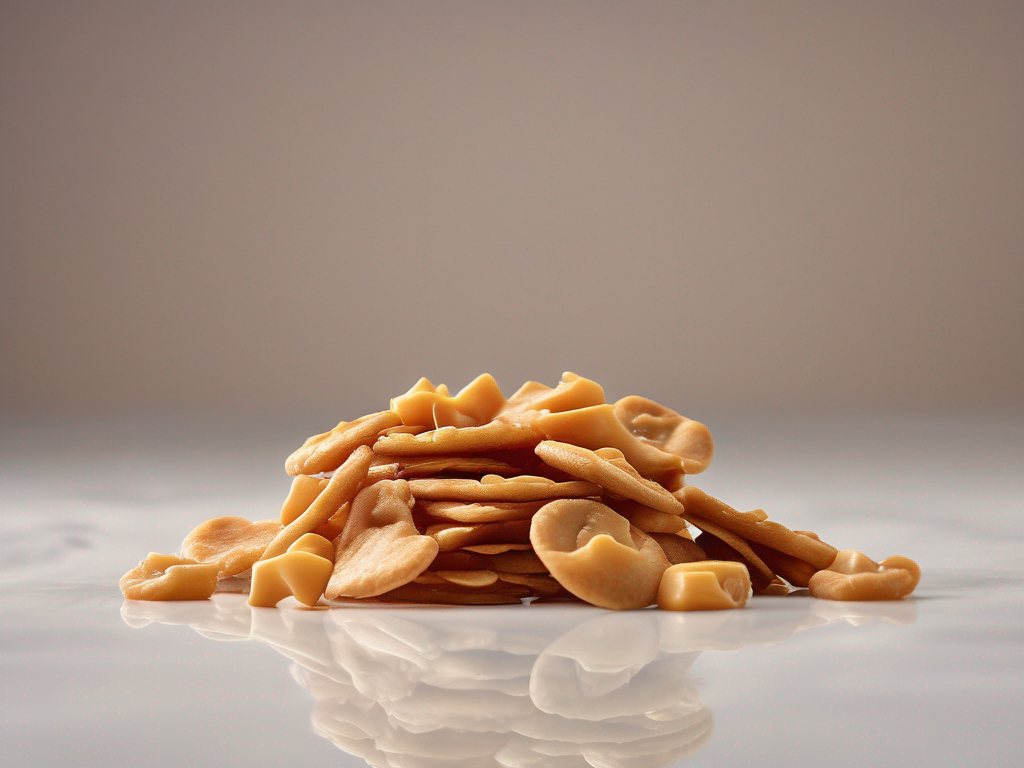
The Ultimate Guide to Preventing Mold Growth on Butterscotch Chips in Humid Climates
Get Your Free Food Safety Cheat Sheet
30 most common foods with instant answers. Print it and stick it on your fridge—completely free!
The Ultimate Guide to Preventing Mold Growth on Butterscotch Chips in Humid Climates
Are you a fan of the rich and buttery flavor of butterscotch chips but struggle with keeping them fresh in humid climates? Mold growth on butterscotch chips can be a common issue when exposed to moisture, leading to food waste and potential health risks. In this comprehensive guide, we will explore practical tips and essential information to help you prevent mold growth and ensure the safety of your butterscotch chips, even in humid conditions. (Butterscotch chips)
Understanding Mold Growth on Butterscotch Chips
Before we delve into prevention strategies, it's essential to understand why mold tends to develop on butterscotch chips, especially in humid climates. Mold is a type of fungus that thrives in moist environments and feeds on organic matter, such as sugars present in butterscotch chips. When exposed to humidity, mold spores can quickly colonize the surface of the chips, leading to visible mold growth and potential mycotoxin contamination.
Factors Contributing to Mold Growth:
-
Humidity Levels: High humidity levels provide the ideal breeding ground for mold spores to germinate and spread on butterscotch chips.
-
Improper Storage: Storing butterscotch chips in environments with poor ventilation or fluctuating temperatures can promote mold growth.
-
Packaging: Damaged or improperly sealed packaging can expose butterscotch chips to moisture, accelerating mold development.
Tips for Preventing Mold Growth on Butterscotch Chips
Now that we understand the factors that contribute to mold growth on butterscotch chips, let's explore effective strategies to prevent mold and prolong the shelf life of your favorite sweet treat.
Storage Solutions:
-
Optimal Storage Conditions:
- Store butterscotch chips in a cool, dry pantry away from direct sunlight and heat sources.
- Use airtight containers or resealable bags to protect the chips from moisture and air exposure.
-
Use Silica Gel Packs:
- Place silica gel packs in the storage container to absorb excess moisture and maintain dry conditions.
-
Refrigeration:
- If your kitchen is particularly humid, consider storing butterscotch chips in the refrigerator to prolong their freshness.
Handling and Usage Tips:
-
Rotate Stock:
- Practice FIFO (First In, First Out) rotation to ensure older butterscotch chips are used first to prevent spoilage.
-
Avoid Condensation:
- Allow butterscotch chips to come to room temperature before opening the packaging to prevent condensation formation.
-
Inspect Regularly:
- Check the butterscotch chips for any signs of mold growth or unusual odors before use.
Cleaning and Maintenance:
-
Clean Storage Containers:
- Regularly clean and dry storage containers to prevent mold spores from contaminating the butterscotch chips.
-
Inspect Pantry Environment:
- Keep your pantry clean and well-ventilated to reduce humidity levels and minimize mold risks.
Safety Precautions and Best Practices
Ensuring food safety when dealing with butterscotch chips is paramount to prevent foodborne illnesses and mold-related health issues. Here are some additional safety precautions and best practices to consider:
-
Labeling and Dating: Properly label and date the butterscotch chip containers to track their shelf life and consumption.
-
Temperature Monitoring: Use a food thermometer to check the storage temperature of butterscotch chips regularly.
-
Discard if Suspicious: If you notice any signs of mold growth, off-odors, or texture changes, discard the butterscotch chips immediately.
Conclusion
By implementing the tips and strategies outlined in this ultimate guide, you can effectively prevent mold growth on butterscotch chips in humid climates and enjoy their delicious flavor safely. Remember that proper storage, handling, and cleanliness are key to preserving the quality of your butterscotch chips and safeguarding your health. With a little care and attention, you can savor your favorite sweet treats without worrying about mold contamination. (Butterscotch chips)
Related Posts
Here are some other articles you might find helpful:
Authoritative Food Safety References
These agencies and university labs inform every tip and health precaution we publish.
USDA FoodKeeper – Cold Storage Guidelines
Official refrigerator, freezer, and pantry timelines maintained by the U.S. Department of Agriculture.
Visit USDA FoodKeeperFDA Produce Safety Rule & Grower Guidance
Field-to-fridge handling practices that prevent contamination of fruits, vegetables, and leafy greens.
Visit FDA Produce SafetyCDC Foodborne Illness Prevention Hub
Surveillance-backed guidance on pathogens, symptoms, and steps to reduce foodborne illness risk.
Visit CDC Food SafetyUC Davis Postharvest Technology Center
University research detailing optimal storage atmospheres for produce after harvest.
Visit UC Davis PostharvestPenn State Extension – Home Food Preservation & Safety
Peer-reviewed extension bulletins on safe canning, chilling, and reheating practices.
Visit Penn State ExtensionGet Your Free Food Safety Cheat Sheet
30 most common foods with instant answers. Print it and stick it on your fridge—completely free! Want more? Upgrade to the complete guide with 70+ foods.
Scan your food directly and get instant safety info using our AI-powered camera feature.